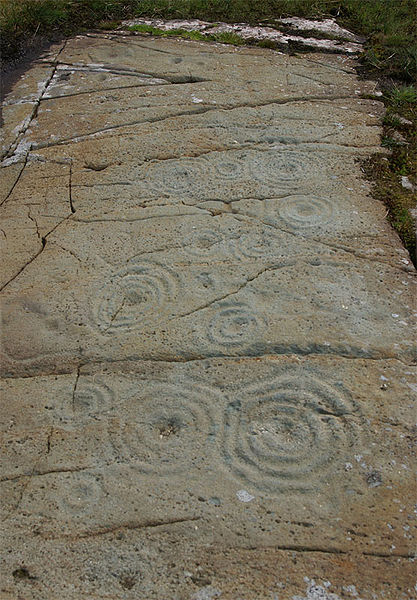HISTORIC Scotland’s Scheduling team is heading to Argyll in May to visit around 120 scheduled monuments across the region, and assess a number of new sites which may be scheduled for the first time.
Scheduled monuments are of national importance and legally protected under the Ancient Monuments and Archaeological Areas Act 1979. Currently there are some 8,200 scheduled monuments across Scotland, ranging from the earliest traces of humankind around 10,000 years ago, up to and including remains from the Second World War.
While in Argyll, the Scheduling Team will be holding a series of public meetings to tell people about Historic Scotland’s Schedule Enhancement Programme.
Carvings at Achnabreck are scheduled monuments
The UK has had legislation in place to protect ancient monuments for 130 years, since the first Act for the Better Protection of Monuments was passed. As a result, the maps and descriptions of some scheduled monuments need to be brought up to date.
While in Argyll, the team will also be assessing 14 sites for inclusion in the Schedule for the first time.
The meetings, in Bowmore, Kilmartin and Oban, are taking place in a region steeped in history and archaeology, with nearly 800 scheduled monuments among more than 14,000 known archaeological sites.
The meetings are also an opportunity for local people to offer knowledge and evidence relating to the sites, which the team will assess as part of their project.
Head of Scheduling and Marine at Historic Scotland, Olwyn Owen, said: “Argyll is rich in prehistoric monuments, where we find evidence of some of Scotland’s earliest settlers.
“These include extensive Mesolithic shell middens on Oronsay, and impressive Neolithic and Bronze Age ritual and funerary sites in Kilmartin Glen, as well as remarkable rock carvings at Achnabreck.”
Near Achnabreck, another scheduled monument and one of the most visited prehistoric sites in Scotland is Nether Largie South, a chambered cairn in Kilmartin valley.
Nether Largie South dates from around 3,000 BC, and includes a burial cist inserted about 1,000 years later. This monument, part of the valley’s extensive linear cemetery, was built to receive the bones of the dead over several generations. When the cairn was excavated in the 19th century, beakers inside were found to contain human remains and arrows. Some of the pots may also have held intoxicating substances, either for the mourners or the dead.
This cairn, as part of the larger linear cemetery, helped to unify the landscape. The cemetery created a spiritual focus for the community, binding its people and their spiritual beliefs to the valley that supported them.
Olwyn Owen said: “Archaeological sites such as Nether Largie South are part of our national and local identity. They contribute to our understanding of who we are, and where we came from, and offer an irreplaceable resource for education and tourism.
“It is these aspects of our culture that scheduling helps to protect. Our forthcoming visit to Argyll is part of a Scotland-wide programme to improve the quality of the Schedule, by bringing the documentation and mapping of scheduled monuments up to date.”
The public meetings, open to all, are being held in Oban, Kilmartin and Bowmore (Islay), on the following dates:
- Oban – Wednesday, May 9th, Church of Scotland Hall, Glencruitten Road;
- Bowmore – Wednesday, May 16th, Round Church;
- Kilmartin – Wednesday, May 23rd, Kilmartin House Museum café.
All are welcome to attend the meetings, which start at 7.30 pm.


